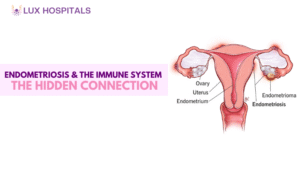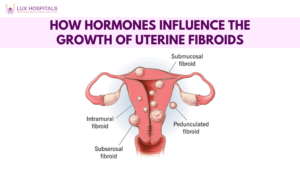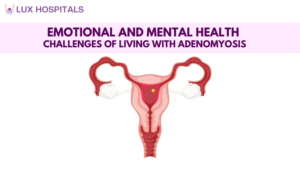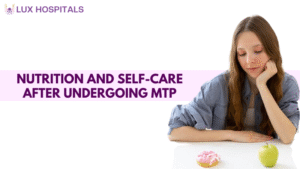PMDD vs PMS What is the difference?

Physical and emotional changes do occur in most women as they approach their period, but not all menorrhagic symptoms are equal. PMDD versus PMS are two well-known yet frequently overlooked runs. Both are associated with the menstrual cycle, but the difference is as broad as Huffiness at its peak in the case of PMDD vs PMS. In PMS, irritable and not screaming at the moon.
This blog will examine what PMDD vs PMS are, why they exist, how they compare, how they impact women’s health, and how they can be managed.
What is PMS?
Premenstrual pattern (PMS) is a cluster of physical and mood symptoms that occurs in the one to two weeks previous to a period and that ceases as soon as it has started. PMS symptoms are universal, being in over 75% of women who menstruate.
What is PMDD?
Premenstrual dysphoric complaint (PMDD) is a more disabling and in capacitating type of PMS. It occurs in roughly 3 to 8 of women with menstrual cycles and results in severe emotional and physical symptoms that seriously interfere with diurnal conditioning.
Difference Between PMDD and PMS
Aspect | PMS | PMDD |
Severity | Mild to moderate | Severe and disabling |
Emotional Impact | Mood swings, mild irritability | Extreme mood swings, anger, depression, anxiety |
| Daily Functioning | Rarely affected | Seriously disrupted work, relationships, and routines |
Duration | 1–2 weeks before period, improves with bleeding | Similar timing, but intense and prolonged |
Treatment | Lifestyle changes, occasional meds | Often needs SSRIs, hormonal therapy, or counseling |
PMDD vs. PMS depicts a continuum to the extent that PMS is enervating but could be relatively life-altering and disabling if not treated.
Treatment for PMDD vs PMS
Treatment for PMDD vs PMS also varies based on the inflexibility and nature of symptoms.
For PMS, the following may be specified:
- untoward anodynes (e.g., ibuprofen)
- Routine physical exercise
- Relaxation and stress reduction ways like contemplation and yoga
- Herbal supplements like chasteberry or evening primrose oil painting
For PMDD, treatment is more severe
- Regulation of mood by antidepressants (SSRIs)
- Hormonal drug like birth control capsules or GnRH agonists
- Cognitive-behavioral therapy (CBT)
- Life adaptation along with medical care
- Nutritive remedy using calcium, magnesium, or vitamin B6
The treatment plan for PMDD VS PMS always needs to be personalized, constantly challenging the advice of a healthcare provider.
Managing Strategies
No matter if it’s PMDD or PMS, active management and tone care are crucial.
Journal to cover symptoms and triggers
- Establish routine with good sleep and nutrition
- Breathing and awareness practices
- Cut back on caffeine, alcohol, and reused sugars
- Stay connected socially indeed on worst days
- Do not be hysterical; get professional help
Having a management plan specific to your own cycle can make a big difference in controlling PMDD vs PMS symptoms.
Lifestyle Changes
For the maturity of women, life changes can reduce the inflexibility of PMDD compared to PMS. Try incorporating these habits
- Regular exercise Indeed light exercise, similar as walking or stretching, releases endorphins
- Aware eating Whole foods, fiber, and low-sugar diets support hormone balancing
- Acceptable rest Get a plenitude of peaceful sleep to stabilize mood and energy
- Hydration Water eases bloating and fatigue
- Take supplements responsibly Under medical guidance, try calcium, magnesium, and B6
Conclusion
PMDD vs PMS education is critical for all women who experience distress related to menstrual cycles. Whereas PMS is a normal state that can be managed, PMDD is a disorder that needs medical help. With knowledge of the symptoms, treatment, and a healthy lifestyle, you can regain control over your health. If you believe you have PMDD or experience symptoms of PMS, talk to a health care provider to get a proper diagnosis and individualized treatment.
Frequently Asked Questions
PMS causes mild to moderate physical and emotional symptoms before a period, while PMDD involves severe mood changes and symptoms that disrupt daily life. PMDD is a more intense, disabling form of PMS.
PMS does not turn into PMDD, but some people who think they have PMS may actually have undiagnosed PMDD. PMDD is a separate, more severe condition requiring medical attention.
PMDD is worse than PMS because it causes extreme emotional and physical symptoms that can severely impact daily life. It often includes intense depression, anxiety, or anger that goes beyond typical PMS
Hormone replacement therapy (HRT) for PMDD aims to regulate or suppress hormonal fluctuations that trigger symptoms. It often involves using estrogen, progesterone, or GnRH agonists under medical supervision.
PMS can affect your life by causing mood swings, irritability, fatigue, and physical discomfort before your period. These symptoms may impact work, relationships, and daily activities.




















